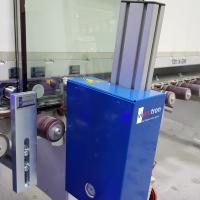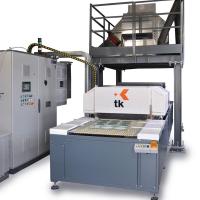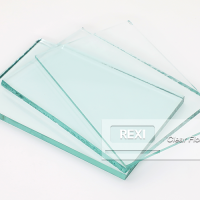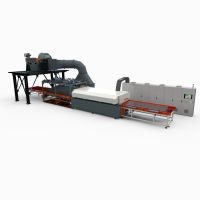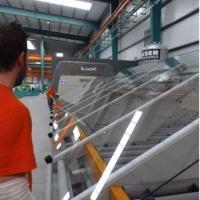This video is the first video in our new #AskGlaston Flat Tempering Series. In this series, we will be covering some of the most advanced and latest innovations in glass tempering. This first episode is devoted to the white haze phenomenon – one of the most asked about issues in the history of #AskGlaston.
So let’s first recap what white haze is. The white hazy marks can be dust, roller residuals or actual deformations caused by a mechanical pressure that is too strong between the glass and the rollers.
White haze can be caused by multiple reasons and can occur in several different forms. Perhaps, the most common type of white haze is a long strip in the center of the glass. But it can also occur near the ends, on the corners or all over the glass with vague hazy areas or some repetitive stripes or marks.
So far, it has been difficult to detect white haze and objectively define its severity. It’s always depended on the observer. Therefore, a new approach toward addressing this issue was required by the market – taking the subjective part out of the equation.
And here it is! For the first time ever, the solution is available to make the judging automatically.
Solution development
The first step in developing the solution was making a system that could reliably produce an image of white haze for every glass sheet processed on a tempering line. This development was done together with Softsolution, who designed a scanner capable of providing a high-quality, high-resolution image of white haze.
The second step in the development process was defining how to rate and categorize any white haze detected. For that, glass processors were invited to work on the project together and move toward a common glass industry standard for white haze.
Today, based on human annotations and advanced neural network, the solution is able to group white haze into three different categories – mild, medium and strong. However, this is just the beginning of the development work. Everyone can still take part and contribute to the industry standard development.
White haze scanner
The best part about the newly developed scanner is its flexibility and small footprint. The scanner is very easy to install for nearly any equipment arrangement. The heart of the scanner is image acquiring sensors combined with a specially developed light source. This unique setup makes even the mildest white haze visible.
The white haze scanner clearly visualizes where precisely white haze is detected on the scanned glass, as well as to what category it refers to. The system also allows the users to define which categories, dimensions and locations of white haze are acceptable for their production and adjust the usage of the scanner based on their own factory needs.
In addition, the scanner is directly integrated into the Glaston flat tempering line control system. This means that all information about the glass is transferred to the scanner.
This development represents a huge change in how the glass industry sees white haze. The white haze phenomenon is now being transferred from a subjective issue to a phenomenon that can be objectively graded.
The next question is how to prevent the issue from happening. For this, check out our earlier articles on the topic.
Stay tuned for the next episode, where we will discuss an automatic glass stress calculation.























